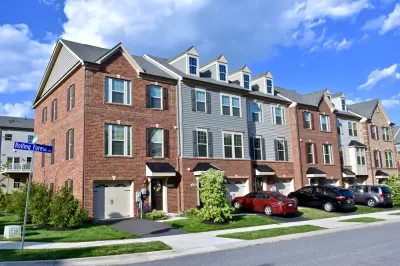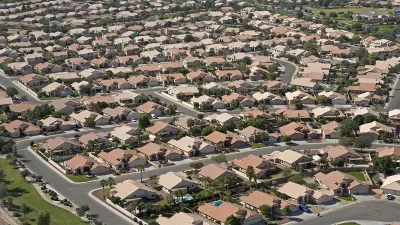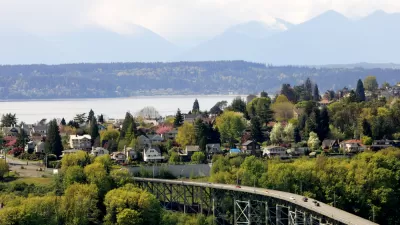A study shows zoning reform isn't a silver bullet for the housing crisis. In some low-income and BIPOC neighborhoods, it could 'cause more harm than good.'

As proposals to reduce or eliminate single-family zoning requirements sweep the country, a new report from New York City’s Association for Neighborhood and Housing Development cautions that "neighborhood upzonings in BIPOC, low-income communities are where these rezonings are really going to cause more harm than good."
Cinnamon Janzer reports on the study, which compared rezoned neighborhoods to those that were not rezoned and "found stark differences between the rezoned areas and the non-rezoned areas." The team "also looked at projects where just a few parcels of land were rezoned at a time. They found that these targeted rezonings produced a higher ratio of affordable housing to market-rate housing than the city’s average of 19%, whereas any neighborhood-scale rezoning, whether the neighborhood was upzoned or downzoned, produced a lower-than-citywide-average ratio of affordable housing."
"Essentially, Walters’ data backs up the fact that more affordable housing is already being built in low-income BIPOC communities and that those communities have the most to lose by new development that brings in market-rate housing." According to Will Delaney, associate director of Hope Community, Inc. in Minneapolis, "just eliminating [single-family zoning] does not, in fact, actually repair the harms of it. If you just undo that but leave everything else the same, the research is laying out what we know to be true—the same winners and losers in the current market will win and lose based on this." Rather than using upzoning as a blunt instrument, says Walters, "the answer lies in treating rezoning and upzoning as what they are—one housing tool among many that should be used where appropriate."
Meanwhile, alarmist concerns about "the death of single-family housing" seem unlikely to come true, even with zoning reform. Under California's proposed SB 9, which is "designed to allow up to four homes on most single-family lots and spur the construction of badly needed new housing," separate research from the Terner Center at the University of California, Berkeley found that a total of 714,000 homes could be built on "5.4% of the state’s 7.5 million single-family lots "a "modest reform" considering the state's deep housing crisis.
FULL STORY: Use Upzoning Sparingly, New Report Suggests

Alabama: Trump Terminates Settlements for Black Communities Harmed By Raw Sewage
Trump deemed the landmark civil rights agreement “illegal DEI and environmental justice policy.”

Planetizen Federal Action Tracker
A weekly monitor of how Trump’s orders and actions are impacting planners and planning in America.

The 120 Year Old Tiny Home Villages That Sheltered San Francisco’s Earthquake Refugees
More than a century ago, San Francisco mobilized to house thousands of residents displaced by the 1906 earthquake. Could their strategy offer a model for the present?

LA’s Tree Emergency Goes Beyond Vandalism
After a vandal destroyed dozens of downtown LA trees, Mayor Karen Bass vowed to replace them. Days later, she slashed the city’s tree budget.

Sacramento Leads Nation With Bus-Mounted Bike Lane Enforcement Cameras
The city is the first to use its bus-mounted traffic enforcement system to cite drivers who park or drive in bike lanes.

Seattle Voters Approve Social Housing Referendum
Voters approved a corporate tax to fund the city’s housing authority despite an opposition campaign funded by Amazon and Microsoft.
Urban Design for Planners 1: Software Tools
This six-course series explores essential urban design concepts using open source software and equips planners with the tools they need to participate fully in the urban design process.
Planning for Universal Design
Learn the tools for implementing Universal Design in planning regulations.
Ada County Highway District
Clanton & Associates, Inc.
Jessamine County Fiscal Court
Institute for Housing and Urban Development Studies (IHS)
City of Grandview
Harvard GSD Executive Education
Toledo-Lucas County Plan Commissions
Salt Lake City
NYU Wagner Graduate School of Public Service





























